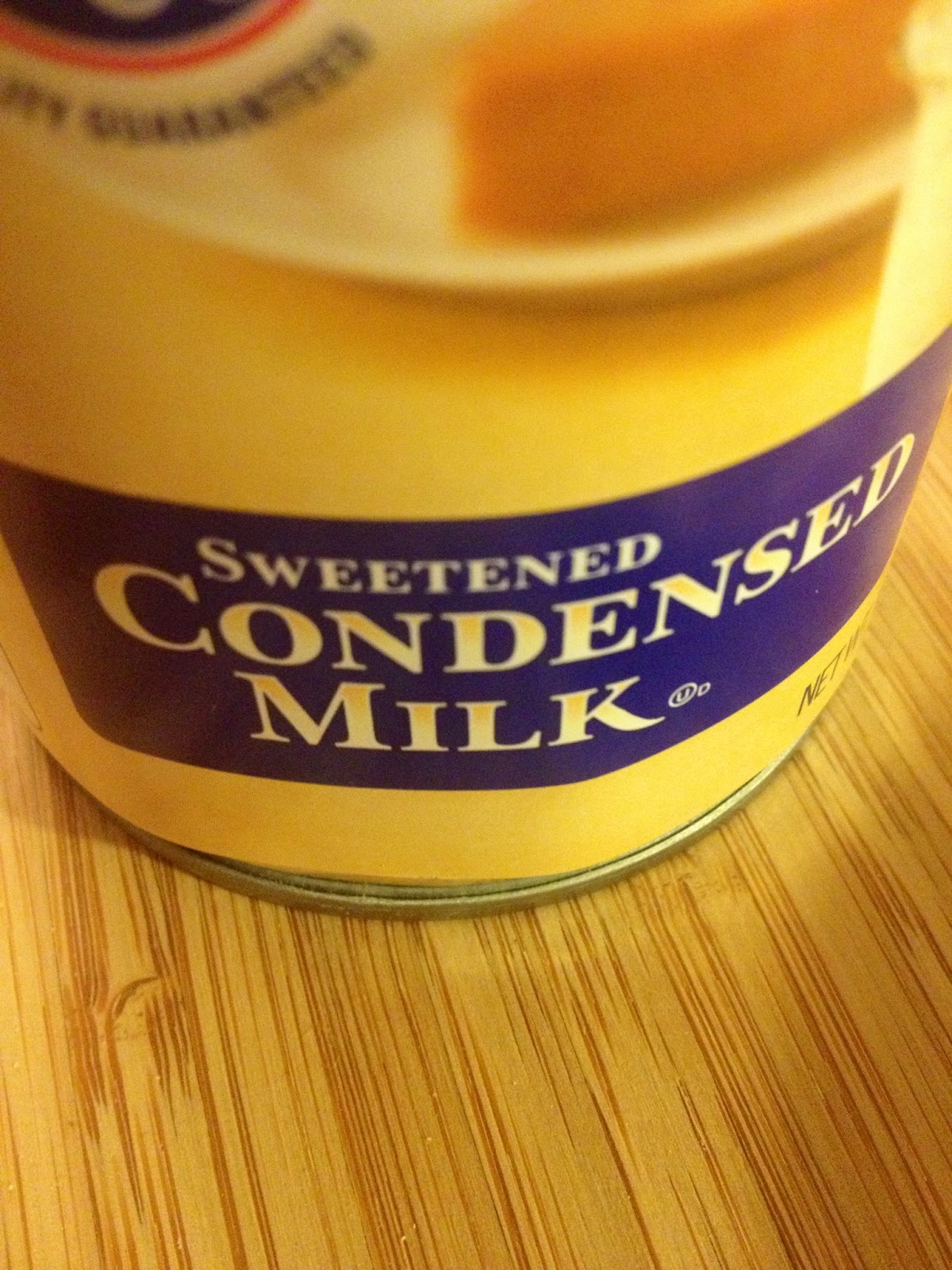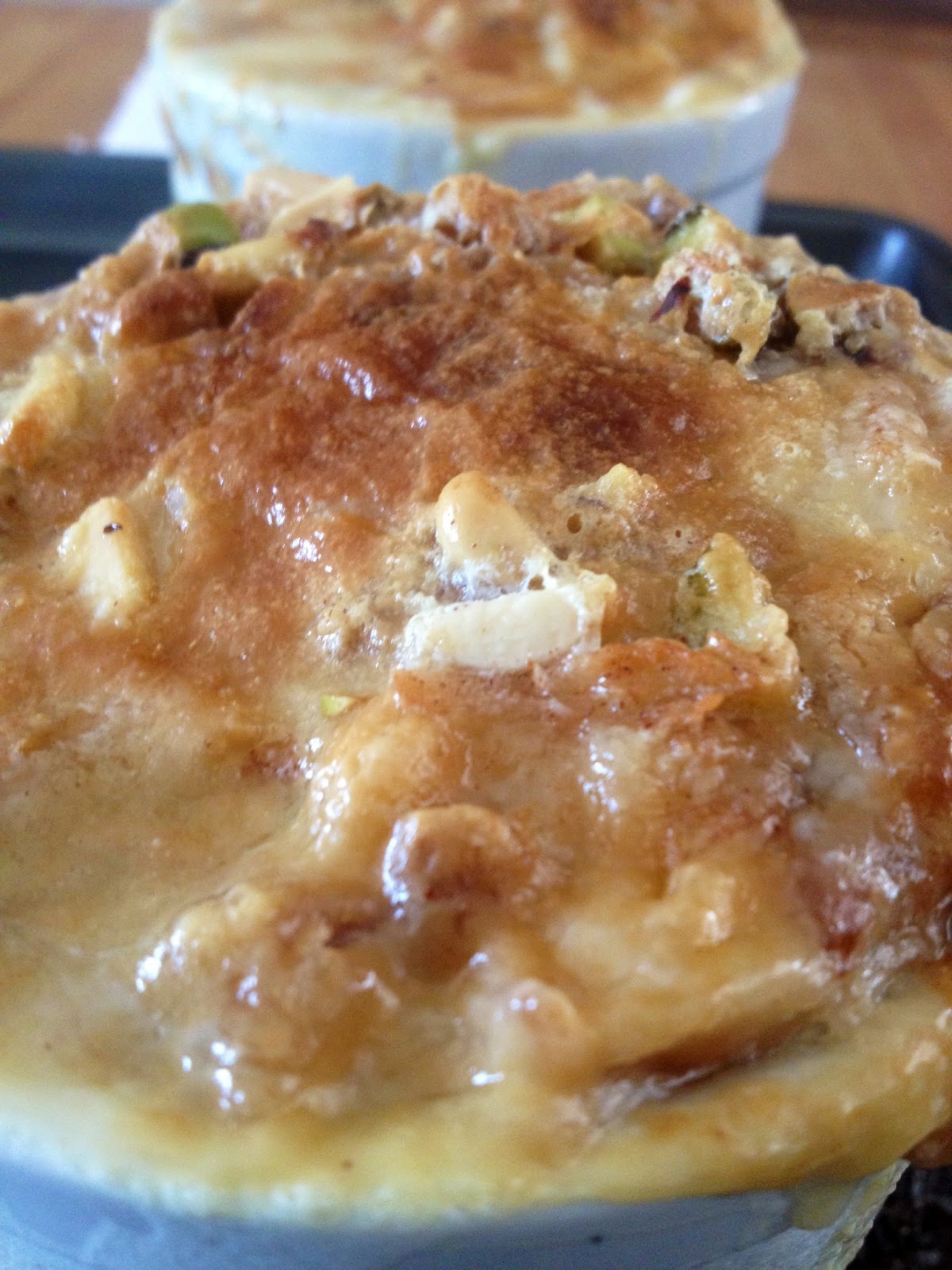Om Ali (pronounced, "uhm Ali") is a very popular and much loved dessert that originated in Egypt. The name of the dessert literally translates to "Ali's mother". The dish was named after her as she developed it. Well, I don't personally know Ali's mother, but I would like to thank her for bringing into existence one of the best tasting things I've ever eaten. Shukran (thank you)!! My friend from Egypt-Khadija-was kind enough to share her family recipe for this dish with me.
This dish is a kind of bread pudding. The notable differences between this and bread pudding is that there is no use of eggs in this recipe. Also, puff-pastry or croissants are the bread base of choice in this dessert. This dessert is not as heavy as traditional bread pudding owing to the flaky, airy texture of the puff pastry or croissants used. A variation of nuts, fruits (dates or raisins) and whipping cream adorn this dessert. What's not to love?? It's as beautiful and exotic as it's country of origin, and delicious enough to please even the most discerning palette. Here's what you'll need to make it...
SERVING SIZE: Serves 6 sufficiently.
SPECIAL EQUIPMENT:
-6 8Oz ramekins, or one 8x11 rectangular baking pan (as shown in the picture).
-2 medium baking sheets.
-Pizza cutter or sharp knife (to cut the puff pastry).
-1 medium pan.
-Whisk.
-Hand-mixer, stand mixer or balloon whisk (for whipping the heavy cream).
-Spatula.
-Medium mixing bowl (for mixing your fruit, coconut flakes and nuts).
INGREDIENTS:
-1 17.5 Oz, package of puff-pastry sheets.
-1/3 cup golden raisins.
-1/2 cup dry-roasted pistachios.
-1/2 cup dry-roasted pine nuts.
-1/2 cup dry-roasted walnuts.
-1/2 cup dry-roasted almond slivers.
-1/2 cup dessicated coconut. If you can't find any, you can substitute it with coconut flakes for baking.
-1 teaspoon ground cinnamon.
-1 14Oz. can of sweetened condensed milk (NOT evaporated milk!), mixed with 2 cups of whole milk OR 3 cups of half-and-half.
-1 teaspoon pure vanilla extract (optional).
-1/4 teaspoon orange blossom water OR rose water.

INSTRUCTIONS:
**25-30 minutes before you begin the preparation of this dish, thaw your puff-pastry by sitting it on the counter at room temperature for 25-30 minutes. Don't let it sit out longer than that or the puff pastry will become too pliable and hard to work with. if this happens, place the puff-pastry back in the refrigerator for about 10 mins, remove and continue with the steps below.**
-Use butter or cooking spray to coat the inside of your ramekins or your baking pan.
**Preheat your oven to 250 degrees Fahrenheit **
-On a baking sheet, spread all your nuts in a single layer and let them roast about 8 mins or until you begin to smell them. Do not let them burn! Roasting the nuts releases their flavors and enhances their color. Once done, remove the nuts from the oven and set them aside.
**Turn your oven up to 400 degrees Fahrenheit.**
-Using your pizza cutter or knife, cut the puff-pastry into squares or rectangles. Pierce the tops with a fork to help release moisture as it bakes. Set aside 1/4 cup of the toasted mixed nuts (for garnishing).
-Place the squares on a baking sheet (no need to butter your baking sheets or use parchment paper as the pastry won't stick-it has plenty of butter).
-On the middle rack of the oven at 400 degrees Fahrenheit, bake the puff-pastry for 12-15 minutes until golden brown as shown in the picture below.
-Set the puff-pastry aside and allow to cool or it will burn your fingers as you tear it into little pieces.
**Turn your oven down to 350 degrees Fahrenheit**
INGREDIENTS FOR THE WHIPPING CREAM:
-2 cups of cold, heavy whipping cream.
-3 tablespoons of confectioners (powdered) sugar.
-1 teaspoon of pure vanilla extract.
INSTRUCTIONS FOR MAKING THE WHIPPED CREAM:
-Using a balloon whisk, hand mixer or stand mixer. combine the above ingredients in a medium mixing bowl and whisk on medium speed until the whipping cream forms soft peaks when you try to lift it out of the bowl with a whisk or spoon as shown below. As soon as you see this, STOP MIXING or your whipped cream will deflate and turn into butter :(. Set aside.
-Meanwhile, in the medium pan on medium heat, bring the sweetened condensed milk and whole milk to a boil. Add the 1 teaspoon of pure vanilla extract and the 1/4 teaspoon orange blossom water or rose water and stir. Remove the milk off of the stove as soon as it begins to boil and set aside.
-In the medium mixing bowl, combine the coconut, toasted nuts, raisins and cinnamon and toss well using a fork. Set aside.
-Break the baked, cooled puff-pastry into pinch-size pieces as shown in the video.
-Line the bottoms of these ramekins 1/3 way up with the pieces of puff-pastry. Press down with a fork.
-Add a layer of the mixed nuts, raisins and coconuts over the layer of puff-pastry (about 2-3 tablespoons). Press down.
-Add another layer of torn puff-pastry over the layer of nuts and push down using the back of a fork or spoon.
-Pour the milk mixture over top of the puff-pastry/ nut mix and press down each time you pour, to help the puff-pastry absorb the milk mixture. Once you've pressed down all you can and some milk still comes up over the puff-pastry, its time to stop adding milk.
-Place all the ramekins or your baking dish on a baking sheet. if you are using ramekins, make sure that they do not touch in order to ensure even baking.
-Bake until the tops of the Um Ali are a light golden-brown and the milk in the Um Ali begins to bubble.
**Turn your oven to "broil"**
-With the oven door slightly ajar, let the Um Ali's broil for 1-2 minutes until the tops are nice and caramelized. Please do not walk away from your Um Ali at this time for anything or they will burn!
-Remove your dessert from the oven, let it cool for about 10 minutes. Sprinkle with some more of the reserved nuts (optional). This dessert is best served warm. Now how exotic is that?!? Enjoy!!
PS: Hubby experimented by adding a drizzle of chocolate syrup over the pudding....sweet heavens!! I didn't think it would be possible to make this dessert any better than it already was-but it did!!


























































